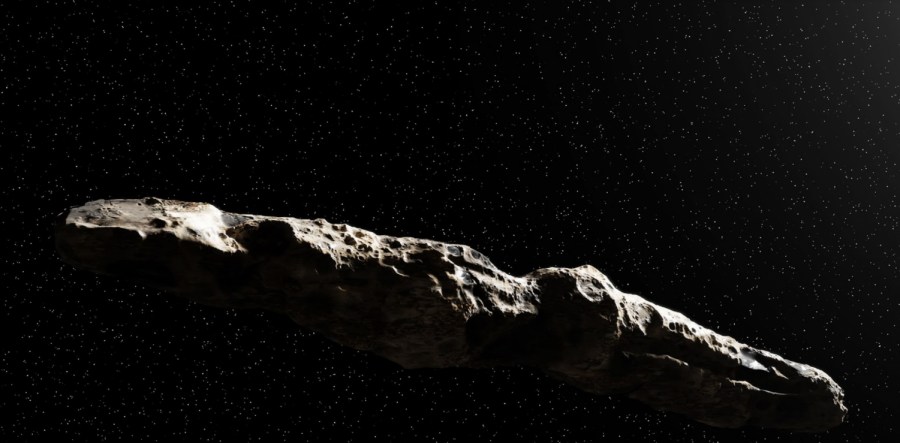Unexplainable phenomenon from outer space: unremarkable or uncanny?
March 30, 2021
On October 19, 2017, a peculiar object was discovered at the Haleakalā Observatory in Kula, Hawai’i, that would go on to puzzle astronomers all over the world. It was the first object in our solar system known to come from somewhere foreign. It’s called ’Oumuamua.
‘Oumuamua, a Hawaiian term for “messenger” or “scout”, was first noticed by Robert Weryk, an astronomer at the University of Hawai’i at Manoa. This mysterious object didn’t have the typical trail of a comet, had a length and width ratio more drastic than any asteroid or comet known to man, and moved at an extremely unusual, high speed of 196,000 miles per hour. In fact, it was so fast that not even the gravity of the sun by itself was enough to send it blazing through the star-lit sky at such high speeds. So, what in the world is ‘Oumuamua?
Breaking Down the Facts: Natural Occurence or Extraterrestrial Creation?
Darryl Seligman Ph.D., a graduate student from Yale University, thinks that ‘Oumuamua is simply an iceberg — an iceberg made of hydrogen.
Seligman was able to trace the origin of ‘Oumuamua to a molecular cloud, which contains gas to produce stars. However, recent research has suggested that these clouds also emit icebergs made up of hydrogen that look and act in the same way that ‘Oumuamua did.
When the temperature is just cold enough, at around -450 degrees Fahrenheit, hydrogen will solidify. These clouds are the only known thing in the universe that can cause this transition to occur. According to his theory, frozen hydrogen molecules attach themselves to dust inside the cloud, which leads to formation of ice blocks. Over time, an iceberg of roughly a couple hundred meters across would form — ‘Oumuamua is estimated to be less than 800 meters across.
In addition to Seligman’s theory, once the cloud dissolves and the iceberg is set free to orbit, it gets hit by cosmic radiation several times during its route. Cosmic rays are particles that come from the sun with high energy, and move at nearly the speed of light. The radiation causes the iceberg to become chiseled in some directions more than others, which further serves to explain why ‘Oumuamua was so elongated.
Avi Loeb thinks differently.
Abraham “Avi” Loeb is an astrophysicist who has taught at Harvard University since 1993. He has deeply analyzed ‘Oumuamua and determined that it is unequivocally sent from an extraterrestrial entity. He states that, along with power from the sun’s gravity, it appeared to have an additional force pushing on it — a push that comets get from their cometary tail. However, ‘Oumuamua was not followed by a tail of any sort, so it is a mystery as to what caused that force.
Loeb and a group of other researchers at Harvard have also considered that if solar radiation was the sole source propelling ‘Oumuamua, it means that it must be made up of a new type of thin, interstellar substance, which could be naturally or artificially created.
These questions with ambiguous answers make him firmly believe that ‘Oumuamua was unquestionably created by our intergalactic neighbors, and that we are not alone.
We only know very minimal information about ‘Oumuamua. There is so much more that we are yet to find out: where did it originate from? How long has it been in orbit for? What is it made of? We are still to find out what it actually looks like, since the available cameras were only able to produce an image of a single dot of light before ‘Oumuamua vanished from view. Since January of 2018, ‘Oumuamua has never been seen again, but scientists have continued to investigate this mysterious phenomenon, coming up with new theories every day. Who knows if it will ever revisit our galaxy?










